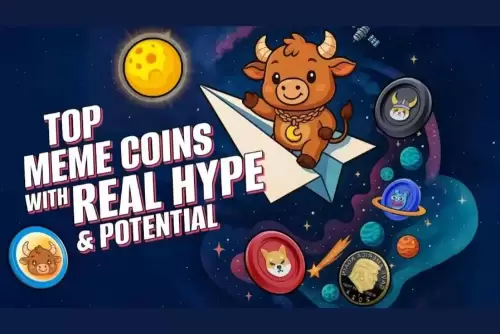 |
|
 |
|
 |
|
 |
|
 |
|
 |
|
 |
|
 |
|
 |
|
 |
|
 |
|
 |
|
 |
|
 |
|
 |
|
Articles d’actualité sur les crypto-monnaies
New blood group system in humans identified, marking a major breakthrough in hematology
Jan 13, 2025 at 05:00 am

A team of researchers from the UK and Israel has identified a new blood group system in humans, marking a major breakthrough in hematology. The discovery, published in September, stems from a puzzling case in 1972, solving a half-century-old mystery and deepening our understanding of human blood diversity.
The case involved a pregnant woman whose blood lacked a surface molecule found on nearly all human red blood cells. This molecule, now identified as the AnWj antigen, eventually led to the classification of the MAL blood group system after decades of dedicated research.
“It represents a huge achievement, and the culmination of a long team effort,” says Dr Louise Tilley, a hematologist at the UK National Health Service who has spent nearly 20 years studying this rare blood variation. “This discovery enables us to provide the best care to rare, but important, patients.”
According to the World Health Organisation’s global blood safety database, understanding blood group variations is essential for ensuring safe transfusions. While most people are familiar with the ABO blood system and the Rh factor, human blood classification is far more complex.
The National Institutes of Health reports that scientists have identified over 30 blood group systems, each defined by distinct proteins and sugars on the surfaces of blood cells.
The global distribution of blood types varies widely by region. In Kenya, data from the Kenya National Blood Transfusion Service shows that approximately 30 per cent of the population has blood type O+, making it the most common blood type in the country. Globally, according to WHO statistics, blood type O+ remains the most prevalent, found in about 38 per cent of the world’s population.
The newly discovered MAL blood group system, however, is exceptionally rare. Research indicates that more than 99.9 per cent of people have the AnWj antigen, making its absence extra-ordinary. Dr Tim Satchwell from the University of the West of England explains, “MAL is a very small protein with some interesting properties, which made it difficult to identify and required us to pursue multiple lines of investigation.”
The discovery has huge implications for medical science. The MAL protein plays a crucial role in maintaining cell membrane stability and facilitating cell transport. Intriguingly, the AnWj antigen is absent in newborns but develops shortly after birth, a phenomenon that researchers are still working to understand.
The research team identified three patients with this rare blood type who didn’t have the expected genetic mutation, suggesting that certain blood disorders can suppress the antigen.
This finding opens new avenues for diagnostic medicine, as testing for the MAL mutation could help determine whether a patient’s negative MAL blood type is inherited or a sign of an underlying medical condition.
The WHO emphasizes that understanding rare blood types is crucial for emergency medicine and maternal health. In cases where patients with rare blood types need transfusions, having detailed knowledge of these variations can mean the difference between life and death.
The National Institutes of Health estimates that one in every 100,000 people may have an extremely rare blood type, making research into these variations vital for public health.
Clause de non-responsabilité:info@kdj.com
Les informations fournies ne constituent pas des conseils commerciaux. kdj.com n’assume aucune responsabilité pour les investissements effectués sur la base des informations fournies dans cet article. Les crypto-monnaies sont très volatiles et il est fortement recommandé d’investir avec prudence après une recherche approfondie!
Si vous pensez que le contenu utilisé sur ce site Web porte atteinte à vos droits d’auteur, veuillez nous contacter immédiatement (info@kdj.com) et nous le supprimerons dans les plus brefs délais.
-

- Liquidité du bitcoin, zone d'osmose et intérêt des investisseurs: une plongée profonde
- Aug 03, 2025 at 02:00 pm
- Exploration de la surtension de la liquidité du bitcoin sur la zone d'osmose, alimentée par des solutions innovantes et une forte confiance des investisseurs au milieu des tests de marché.
-

-

-

- Crypto baleines, monnaie de mèmes et coup de lune: naviguer dans le Far West de 2025
- Aug 03, 2025 at 01:45 pm
- Explorez la convergence des baleines cryptographiques, des pièces de monnaie et des coups de lune en 2025. Découvrez les tendances, les idées et les opportunités potentielles dans ce paysage dynamique.
-

- Licences de stablecoin de Hong Kong: une pression serrée?
- Aug 03, 2025 at 01:24 pm
- L'approche de Hong Kong en matière de réglementation des stablescoin est stricte, signalant un équilibre prudent entre l'innovation des actifs numériques et la stabilité financière. Qu'est-ce que cela signifie pour l'avenir?
-

- Signaux haussiers de Dogecoin: accumulation de bougies et de baleines engloutissantes pointent vers une surtension potentielle
- Aug 03, 2025 at 01:20 pm
- Dogecoin clignote des signes haussiers! Une troisième bougie engloutissante haussée mensuelle, associée à une accumulation de baleines importante, suggère une augmentation potentielle des prix. Doge est-il dirigé vers Valhalla?
-

-

- APCS, prévente, fusées: décodage de la manie de la pièce meme en juillet 2025
- Aug 03, 2025 at 01:15 pm
- Plongez dans la frénésie de monnaie de mèmes de juillet 2025! Nous disséquons la prévente explosive de l'Arctique Pablo Coin, la pointe de liquidité de Turbo et les avantages de jalonnement de Degen. Quelle pièce de mèmes régnera?
-






























































